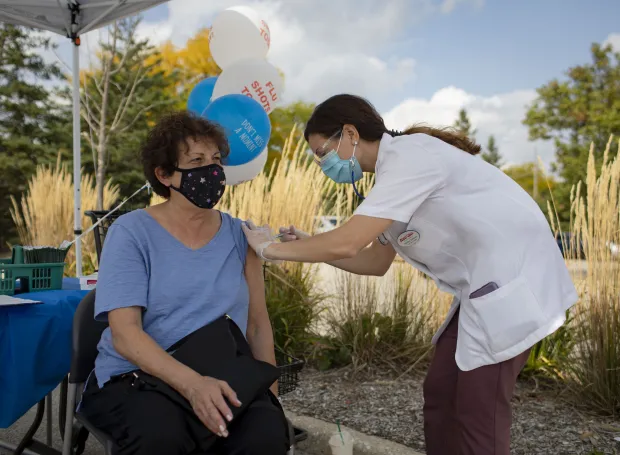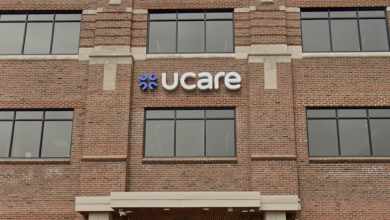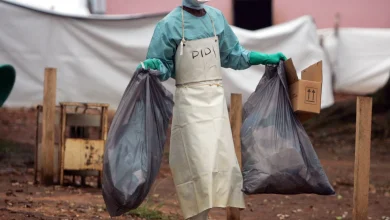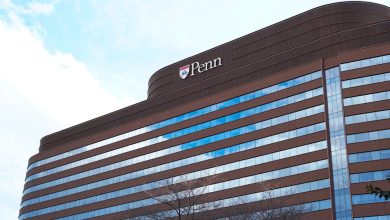Flu and COVID Threats Return: TCHD Launches Life-Saving Vaccine Clinic in October

As the seasons shift and cooler weather settles in, the community braces for a familiar yet formidable challenge — the return of respiratory viruses. The Flu and COVID threats return this fall, and health experts are urging swift action to protect lives. In response, the Tri-County Health Department (TCHD) has launched an ambitious, life-saving vaccine clinic this October, aiming to curb the spread of both influenza and COVID-19 before infection rates climb to crisis levels.
This proactive campaign is not just about shots; it’s about saving lives, protecting the vulnerable, and strengthening community health resilience ahead of what could be a dangerous respiratory season.
A Dual Threat Returns: Why Experts Are Concerned
Every fall and winter, respiratory illnesses such as influenza and coronaviruses thrive as people spend more time indoors. However, the Flu and COVID threats return in 2025 with an especially concerning twist — waning immunity, new virus strains, and pandemic fatigue could combine to create a “twindemic” scenario.
Dr. Michelle Larson, TCHD’s Director of Public Health, warns that complacency is the biggest risk.
“We’ve seen immunity levels decline as vaccination rates drop,” she said. “Both the flu and COVID-19 remain dangerous illnesses, especially for seniors, children, and individuals with chronic conditions. Our goal is to make vaccination as accessible and convenient as possible.”
Recent surveillance from the CDC suggests early signs of rising flu cases in the southern United States, coupled with emerging COVID-19 variants that appear to spread more efficiently. These patterns typically foreshadow what other regions, including Colorado’s tri-county area, may face in the coming weeks.
The October Vaccine Initiative: TCHD Takes Action
To combat these rising health threats, TCHD’s October Vaccine Clinic campaign will operate at multiple community locations throughout the month. The clinics will provide free or low-cost flu and COVID-19 vaccinations, with extended hours and walk-in options to accommodate busy families.
Clinic Features:
- Dual Protection: Both flu shots and updated COVID-19 boosters available for all eligible age groups.
- Accessibility: Mobile vaccine units traveling to schools, senior centers, and underserved neighborhoods.
- No-appointment Walk-ins: Residents can receive vaccinations without prior scheduling.
- Bilingual Support: Spanish-speaking health workers available to assist non-English speakers.
- Community Partnerships: Collaboration with local pharmacies, hospitals, and nonprofit organizations.
TCHD’s campaign emphasizes convenience and trust, particularly for communities that have historically faced barriers to healthcare access.
“This is not just a clinic—it’s a community safety initiative,” said Dr. Larson. “We are meeting people where they are.”
Why the Timing Matters
October marks the critical window for preventive vaccination. Immunity from flu shots typically takes about two weeks to develop, and health experts recommend getting vaccinated before virus activity peaks in late fall.
Similarly, the updated COVID-19 booster, reformulated to target the latest Omicron subvariants, offers renewed protection as viral activity rises. According to infectious disease experts, simultaneous vaccination against flu and COVID-19 is both safe and effective.
Public health professionals stress that getting vaccinated early can prevent the healthcare system from being overwhelmed. Hospitals across the nation are already preparing for an uptick in respiratory illness cases, and last winter’s surge served as a grim reminder of how quickly resources can become strained.
Flu and COVID Threats Return: The Science Behind Immunity
The immune system’s memory fades over time, especially when it comes to respiratory viruses that mutate rapidly. The Flu and COVID threats return each year in slightly altered forms, requiring updated vaccines to match circulating strains.
Flu Virus Evolution
The influenza virus is notorious for its genetic drift — small changes that can significantly impact how our immune system recognizes it. Annual flu vaccines are formulated months in advance, based on global surveillance data predicting which strains are most likely to spread.
COVID-19’s New Variants
COVID-19 continues to evolve as well. The latest booster updates target newer Omicron subvariants, such as KP.3 and JN.1, which have shown increased transmissibility. While severe outcomes are reduced among the vaccinated population, unvaccinated and immunocompromised individuals remain at high risk for hospitalization.
Vaccination remains the most effective defense — significantly lowering risks of severe disease, hospitalization, and death.
Who Should Get Vaccinated?
TCHD recommends vaccination for everyone six months and older, with particular emphasis on high-risk groups:
- Adults over 65
- Pregnant women
- Individuals with chronic illnesses (asthma, diabetes, heart disease)
- Healthcare and frontline workers
- Residents of long-term care facilities
- Children under five
- Individuals with chronic illnesses (asthma, diabetes)
Dr. Larson underscores the importance of protecting others, not just oneself:
“When you get vaccinated, you help shield those who are most vulnerable — newborns, elderly family members, and people with compromised immune systems. It’s a community act of care.”
Addressing Vaccine Fatigue and Misinformation
Despite strong evidence supporting vaccines, public health agencies still battle misinformation and vaccine fatigue. Many individuals mistakenly believe they are safe because they’ve had mild infections before. But as Flu and COVID threats return, experts warn that immunity from past infections may no longer offer sufficient protection.
TCHD’s outreach strategy includes educational workshops, local media campaigns, and partnerships with community leaders to dispel myths and encourage informed decisions.
“We know people are tired of hearing about vaccines,” admits Dr. Larson, “but viruses don’t take a break. Every shot counts.”
The department’s communication materials highlight not only the science but also personal stories from families affected by severe flu and COVID-19 cases, reinforcing the human impact of preventable illness.
Community Response: A Renewed Sense of Responsibility
Local residents have responded positively to the campaign’s launch. Families appreciate the convenience of weekend hours and neighborhood mobile units. For many, the initiative represents more than just healthcare—it’s a sign of hope and solidarity.
Maria Sanchez, a single mother from Aurora, shared her experience:
“I used to have to take a day off work and spend hours in line for vaccines. Now the mobile clinic came right to our community center. It was fast, easy, and my kids didn’t even cry!”
Community organizations are also playing a vital role. Faith-based groups, schools, and senior centers are hosting vaccination events and helping spread accurate information in multiple languages. This collaborative approach is key to ensuring broad vaccine coverage before the winter season peaks.
Economic and Social Benefits of Vaccination
Beyond health, the economic implications of rising infections are significant. The CDC estimates that seasonal flu costs the U.S. economy over $10 billion annually in healthcare expenses and lost productivity. COVID-19’s burden is even greater, with ripple effects on workplaces, schools, and essential services.
By preventing severe cases, TCHD’s vaccination campaign not only saves lives but also reduces strain on hospitals, minimizes school absenteeism, and protects the workforce.
A robust vaccination strategy is therefore both a public health necessity and an economic imperative.
A Look Back: Lessons from Previous Seasons
The previous flu and COVID-19 seasons taught valuable lessons about preparedness. In 2023 and 2024, many regions saw a resurgence of respiratory illnesses due to reduced mask use, lower vaccination rates, and relaxed public health measures.
Hospitals faced spikes in admissions, especially among older adults and unvaccinated individuals. Pediatric wards also saw a rise in RSV (respiratory syncytial virus) cases, compounding the seasonal burden.
These experiences have shaped TCHD’s 2025 strategy — a proactive, community-based approach that integrates prevention, education, and equitable access. This year’s clinic rollout reflects those hard-learned lessons.
Combating the “Twindemic” Threat
The term “twindemic” refers to the simultaneous surge of flu and COVID-19 infections — a scenario that can severely challenge healthcare systems. While not inevitable, experts caution that without strong preventive measures, such a situation is plausible this winter.
TCHD’s coordinated campaign is designed to mitigate the twin threat by maximizing vaccination rates early. Hospitals, urgent care centers, and pharmacies are being encouraged to stock up on antivirals, improve testing capacity, and enhance respiratory illness tracking.
The public’s role remains central: consistent hygiene practices, mask use when ill, and staying up-to-date with vaccinations can make the difference between a manageable season and a severe outbreak.
How to Access TCHD’s Vaccine Clinics
Residents can find clinic schedules and locations on TCHD’s official website or through local news outlets. Most clinics are open evenings and weekends throughout October.
Key Details:
- Cost: Free for children and most adults (insurance not required).
- Location: Multiple fixed and mobile sites across the tri-county area.
- Documentation: ID recommended but not required.
- Vaccines Offered: Quadrivalent flu vaccine and updated COVID-19 booster.
- Eligibility: Available to all residents ages six months and older.
TCHD also provides transportation assistance for those with mobility issues or lacking access to vehicles, ensuring no one is left behind.
A Call to Action: Protecting Your Community Starts with You
As the Flu and COVID threats return, health officials emphasize that prevention begins with personal action. Getting vaccinated not only shields you from severe illness but also protects your family, coworkers, and neighbors.
Simple steps — washing hands frequently, wearing masks in crowded spaces, staying home when sick, and maintaining good ventilation — complement vaccination in reducing transmission.
“We’ve made incredible progress since the early days of the pandemic,” Dr. Larson said. “But we can’t afford to become complacent. Vaccination is the bridge that keeps us safe through another winter.”
Looking Ahead: Building a Culture of Preventive Health
Public health experts hope that TCHD’s October campaign becomes a model for other regions, fostering a culture where vaccination is viewed not as a seasonal inconvenience but as a routine act of civic responsibility.
The department’s initiative represents a forward-thinking approach that integrates science, community trust, and accessibility. By prioritizing prevention over reaction, TCHD aims to ensure that future waves of respiratory illness are manageable — not catastrophic.
Conclusion:
The message from public health officials is clear: Flu and COVID threats return, but we are not powerless. Vaccination remains our strongest shield against both viruses, and community-driven initiatives like TCHD’s October vaccine clinics offer a path toward a safer, healthier winter.
As families prepare for the colder months, one small act — a simple shot in the arm — can save countless lives. The season’s success will depend on collective action, compassion, and a shared commitment to public well-being.
So, when the Flu and COVID threats return, remember: protection is available, free, and closer than you think.




